Geography
The Kingdom of Cambodia, formerly Kampuchea, is a Southeast Asian nation that borders Thailand, Laos, Vietnam, and the Gulf of Thailand. The capital city is Phnom Penh.
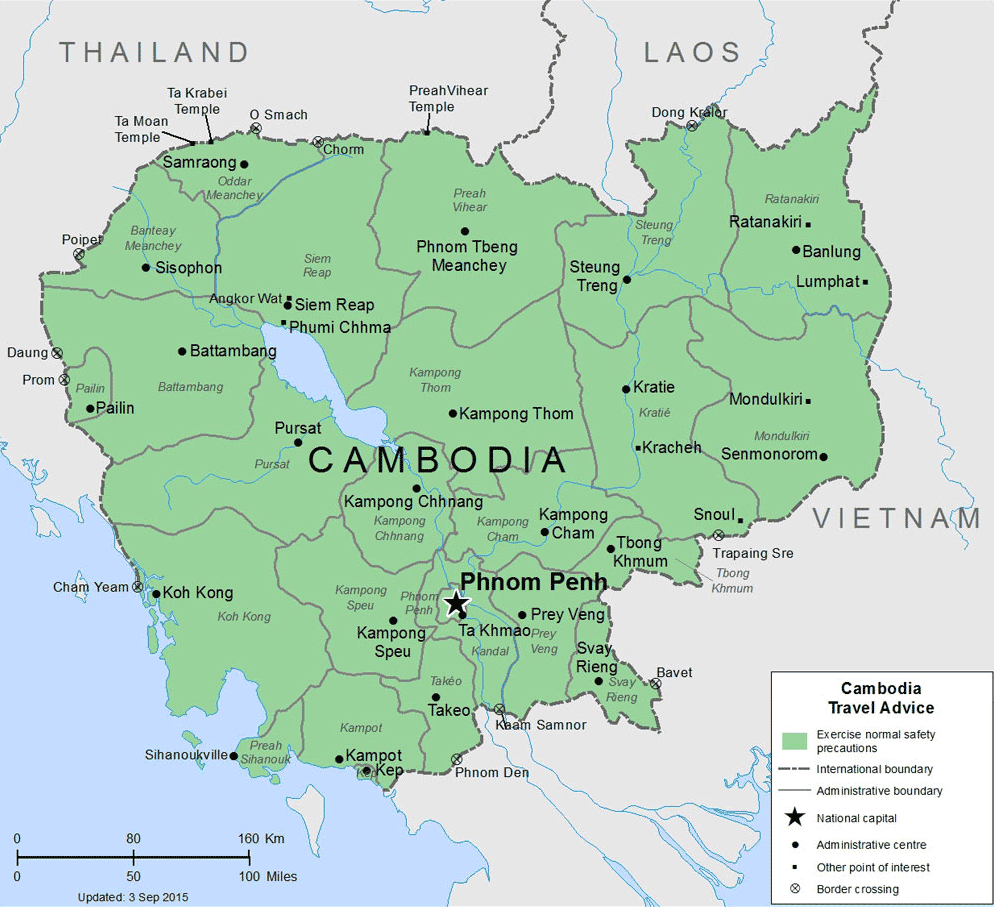
Situated in the southwest of the Indochinese peninsula, Cambodia occupies a total area of 181,035 square kilometers and borders Thailand to the west and northwest, Laos to the northeast, Vietnam to the east, and Gulf of Thailand to the southwest. Cambodia’s geographic coordinates are 13°00'N, 105°00'E. Cambodia’s terrain consists mainly of low plains, with mountains to the southwest and north. Two dominant physical features of Cambodia are the Mekong river, which runs from north to south of the country, and the Tonlé Sap Lake. Natural resources include oil and gas, timber, gemstones, iron ore, manganese, phosphates, and hydropower potential.
Religion
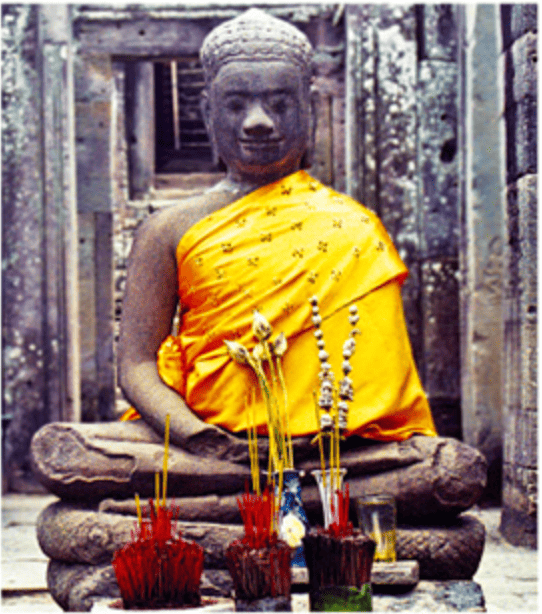
Theravada Buddhism is the prevailing official religion in Cambodia and approximately ninety percent of the population is Buddhist. Islam, Hinduism and Christianity are also embraced in Cambodia.
Since Buddha statues and images represent the revered Buddha, visitors are asked to treat all such statues and images with respect, so as not to offend local people.
In Cambodia, regardless of religion, the country maintains a harmonised state.
Flag
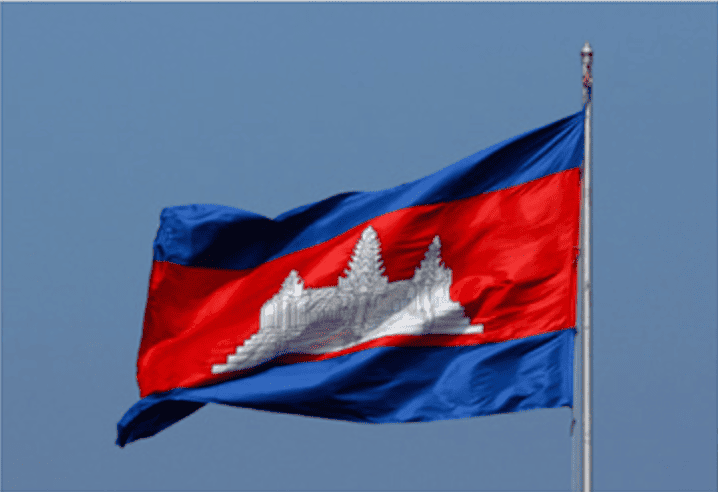
The flag of Cambodia symbolizes the country’s slogan: Nation, Religion, King. The two large blue stripes represent royalty, and the center red stripe represents the nation. The image of the white temple stands for the nation’s religion.
Public Holiday
The Kingdom of Cambodia has a great wealth of traditional and cultural festivals dated according to the Cambodian lunar calendar. These festivals are influenced by Buddhism, Hinduism, and royal traditions. Most are celebrated with joy by both urban and rural communities every year.
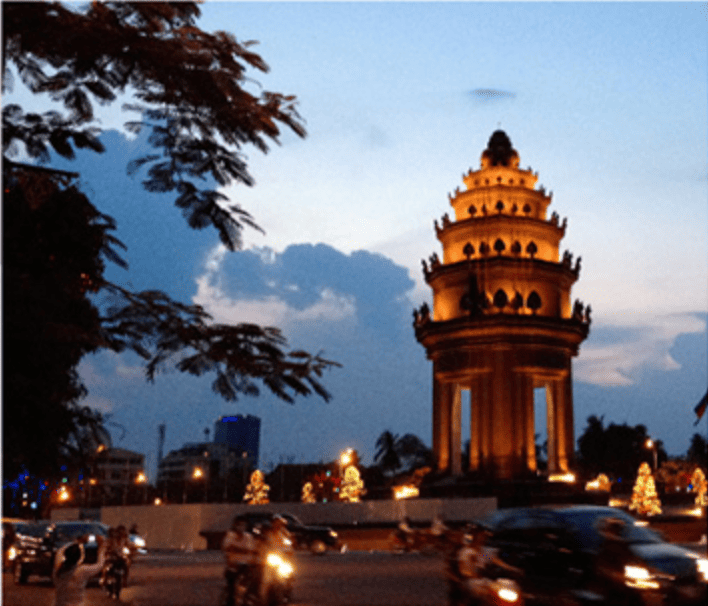
International New Year’s Day
On the occasion of International New Year’s Day, Cambodians celebrate with festivities and gatherings across the country.
Tuesday, January 01, 2025
Victory over the Genocidal Regime
Marks the end of the Khmer Rouge regime in 1979 and the liberation of Cambodia. It honors those who sacrificed their lives for peace and freedom.
Monday, January 07, 2025
International Women’s Day
Celebrated globally, this day recognizes women’s achievements and promotes equality in social, political, and economic spheres.
Saturday, March 08, 2025
Cambodian New Year’s Day
Known as 'Chaul Chnam Thmey', the traditional Khmer New Year marks the end of the harvest season and is celebrated for three days nationwide.
Sunday–Tuesday, April 13–15, 2025
Visak Bochea Day
Honors the birth, enlightenment, and passing of the Buddha. People gather at temples for merit-making ceremonies.
Monday, May 12, 2025
Royal Ploughing Ceremony
Called 'Bon Chroat Preah Nongkoal', this royal ceremony predicts the year’s agricultural prosperity and honors the role of farmers.
Wednesday, May 14, 2025
International Labor Day
Recognizes workers’ rights and contributions. Labor Day is celebrated annually with parades and events across Cambodia.
Thursday, May 01, 2025
Royal Birthday of His Majesty King Norodom Sihamoni
Celebrates the birthday of His Majesty the King, who ascended to the throne in 2004.
Thursday, May 14, 2025
Constitution Day
Marks the adoption of the Constitution of the Kingdom of Cambodia, which re-established the monarchy in 1993.
Tuesday, September 24, 2025
Pchum Ben Day
A 15-day Buddhist festival where Cambodians honor their ancestors through offerings and prayers at pagodas.
Thursday, October 02 – Saturday, October 04, 2025
Commemoration Day of the Royal Soul of His Majesty Norodom Sihanouk
Honors the late King Father Norodom Sihanouk, who led Cambodia’s independence and nation-building efforts.
Tuesday, October 14, 2025
Royal Coronation Day
Commemorates the coronation of King Norodom Sihamoni, the current King of Cambodia, in 2004.
Monday, October 27, 2025
Independence Day
Celebrates Cambodia’s independence from France in 1953. Ceremonies and parades take place at the Independence Monument.
Sunday, November 09, 2025
Water Festival (Bon Om Touk)
A grand festival marking the reversal of the Tonle Sap River. Features boat races and cultural events.
Sunday – Tuesday, November 09 – 11, 2025
Sea Festival
Celebrated in coastal provinces, the festival promotes tourism and showcases Cambodia’s maritime heritage.
Friday – Sunday, December 26 – 28, 2025
Royal Birthday of Her Majesty Queen Mother Norodom Monineath Sihanouk
Honors the birthday of Her Majesty the Queen Mother, who has contributed to humanitarian and cultural causes.
Tuesday, June 18, 2025
History
The race that produced the builders of Angkor developed slowly through the fusion of the Mon-Khmer racial groups of Southern Indochina during the first six centuries of the Christian era. Under Indian influence, two principal centers of civilization developed. The older, in the extreme south of the peninsula, was called “Funan” (the name is a Chinese transliteration of the ancient Khmer form of the word “Phnom”, which means “hill”). Funan was a powerful maritime empire that ruled over all the shores of the Gulf of Siam. In the mid-sixth century, the Kambuja who lived in the middle Mekong (north of present-day Cambodia), broke away from Funan. Within a short period, this new power known as Chenla absorbed the Funanese Kingdom. In the late seventh century, Chenla broke into two parts: Land Chenla (to the north) and Water Chenla (to the south along the Gulf of Thailand), dominated by the Chinese. Land Chenla was fairly stable during the 8th century, whereas Water Chenla was beset by dynastic rivalries. During this period, Java invaded and took control of part of the country.

At the beginning of the ninth century, the kings set up their respective capitals in the present province of Siem Reap. For nearly six centuries, the kings enriched it by building temples one after another, each being more sumptuous than the other. Two hundred of these temples are spread over the Angkorian area—some 400 square kilometers in Siem Reap Province. The temples are best known for their architecture and sculptures.
The first founder of Angkor was King Jayavarman II (802–850), who built one of his residences on the plateau of Kulen in 802. King Indravarman I (877–889), his nephew, constructed a vast irrigation system at Lolei and built the towers of Preah Ko (879) and Bakong (881). King Yasovarman I (889–900) built the Eastern Baray and founded a new capital to the northwest, which became the heart of Angkor.
Later kings such as Harshavarman I, Jayavarman IV, Rajendravarman, and Jayavarman V continued expanding Angkor with monuments like Preah Vihear, Banteay Srei, and Takeo.
King Suryavarman II (1113–1150) extended his power across the region and built the temples of Angkor Wat, Thommanon, Chau Say Tevoda, Preah Palilay, and Banteay Samré. After these achievements, the Khmer civilization began to decline due to internal conflicts and the Cham invasion.
King Jayavarman VII (1181–1220) was the most remarkable figure in Khmer history. He re-established rule over southern Indochina and built monumental works such as Ta Prohm, Preah Khan, Bayon, and Angkor Thom. After his death, the Angkor era declined rapidly due to wars, invasions, and resource exhaustion.
Cambodia later fell under Siamese and French control. After regaining independence in 1953, the country underwent several regime changes:
- The Kingdom of Cambodia (1953–1970)
- The Khmer Republic (1970–1975)
- Democratic Kampuchea (1975–1979)
- The People’s Republic of Kampuchea (1979–1989)
- The State of Cambodia (1989–1993)
- The Kingdom of Cambodia (1993–present)
Food

Cambodian cuisine includes noodles, soups, grills, stir-fried dishes, curries, salads, desserts, lots of vegetables, tropical fruits, and of course rice, which is the staple food for Cambodians. Cambodian culinary secrets are rarely written down; recipes are instead handed down from mother to daughter. From an ancient origin has come a traditional cuisine of unsuspected treasures — a unique blend of flavors and colors that enhance the natural ingredients used.
Cambodians perfected the art of blending spice paste using ingredients like cloves, cinnamon, star anise, nutmeg, cardamom, ginger, and turmeric. They add other native ingredients like galangal, garlic, shallots, lemongrass, cilantro, and kaffir lime leaves to make a distinctive and complex spice blend known as “kroeung”.
Although noodles are popular, almost every meal includes rice. A wide range of curries, soups, and stir-fried dishes are served with rice. Tourists can enjoy the best aromatic grains and types of glutinous rice — the latter often paired with salads or fruits.
Two iconic ingredients give Cambodian dishes their distinct flavor: pra-hok (fermented fish paste) and kapi (fermented prawn paste). They’re essential in many recipes and often used as dipping sauces, forming an important aromatic foundation in Cambodian cooking.
Typically, a Cambodian meal includes rice, soup (samlor), and several side dishes. Each dish is sweet, sour, salty, or bitter — balancing perfectly within a single meal. Chili is optional, allowing tourists to enjoy a full harmony of flavors.

PRAHOK KTIES
Prahok Kties is a delicious staple of Cambodian cuisine. Made from fermented fish and pork belly, this savory dish delivers a rich, deep flavor that highlights Cambodia’s culinary heritage.
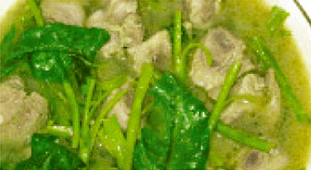
MACHU KROUNG
Machu Kroung is a healthy, flavorful sweet-and-sour soup enhanced with fried peanuts, lemongrass, and saffron. Its bright flavors and colorful presentation make it a beloved Cambodian comfort food.

KORKO
Korko is a hearty traditional stew made with toasted rice powder, pork, and pumpkin. Rich in flavor and texture, it’s a prime example of Cambodia’s unique fusion of traditional ingredients cooked to perfection.
Travel Advisory
DOs and DON’Ts in Cambodia
People in Cambodia are well-known for their hospitality and warmth. Out of respect, visitors to the Kingdom should take care to observe local customs and practices. You may find it useful to familiarize yourself with the following common dos and don’ts before embarking on your trip to Cambodia.
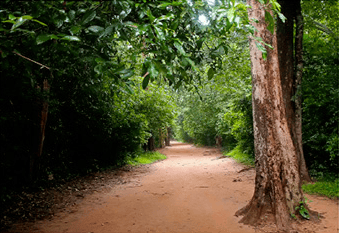
DOs in Cambodia
- Ask for permission before taking photographs of Cambodian people or monks.
- Remove your shoes before entering a temple, pagoda, or someone’s home. Dress modestly (cover shoulders and knees).
- A respectful greeting is the Sampeah — bow slightly with hands pressed together at the chest.
- Bring a small gift (fruit, dessert, or flowers) when invited to a Cambodian home.
- At weddings, it’s customary to bring cash as a gift.
- Cover your mouth when using a toothpick.
- Present and receive business cards with both hands.
DON’Ts in Cambodia
- Don’t use your feet to point at someone.
- Don’t touch a Cambodian person on the head.
- Don’t start eating before the host has taken the first bite.
- Women should never touch monks or hand items directly to them.
- Avoid public displays of affection.
Commonsense Practices
- Do not litter; help keep the community clean and safe.
- Dispose of plastic bags properly — they can be hazardous.
